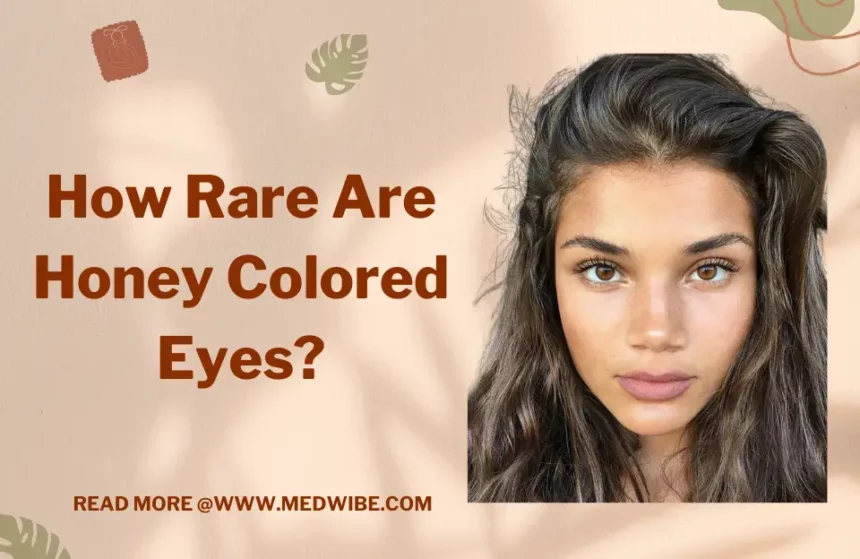Key Features
- Honey colored eyes can describe a specific eye color, often characterized by warm, amber-brown tones.
- Honey colored eyes are considered to be quite rare. They are often referred to as amber or golden eyes. Only about 5% of the world’s population have true amber-colored eyes.
- It can be used to depict someone’s appearance or features, highlighting the unique beauty of their eyes.
- Eye color is determined by multiple genes, and honey brown eyes result from a particular combination of genetic factors.
- It’s essential to protect honey brown eyes from excessive sunlight since they can be sensitive to bright light due to their lighter pigment.
- Contrasting colors like greens and purples can make the eyes pop, highlighting the unique golden undertones.
Hazel Brown eyes, a captivating hue between the spectrum of brown and green, have long been a source of fascination for many. As one delves into genetics, science, and even beauty, the enigma of honey hazel eyes unfolds. Whether you’re curious about the science behind this unique eye color or seek beauty tips to accentuate your hazel eyes, this blog has covered you.
What Are Honey Colored Hazel Eyes?

These eyes blend colors, predominantly shades of brown and green. They can appear differently based on lighting or what an individual might be wearing. Unlike pure brown or pure green eyes, hazel-colored eyes present a multidimensional look, often with a burst of gold or even hints of blue in some instances.
Genetic Factors and Hazel Eye Colors
The magic of brown-colored eyes largely stems from our genes. Eye color inheritance is more complex than once believed. It’s not a game of dominant and recessive genes; instead, multiple genes contribute to the final hue of one’s eyes. Interestingly, two brown-eyed parents can give birth to a child with hazel eyes and vice versa. The unpredictable dance of genetics makes the manifestation of light-colored eyes such a delightful mystery.
Want to know the difference between Hooded vs Non Hooded Eyelids? Learn how these eyelid types affect your appearance and find out easy makeup tips and surgery options to enhance your eyes.
The Science Behind Hazel Eyes
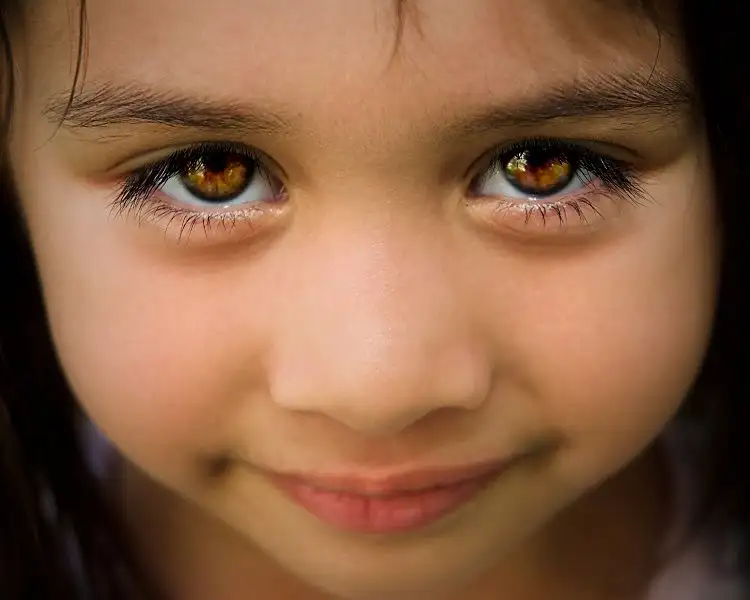
In their essence, Hazel eyes don’t have a fixed proportion of melanin. This natural pigment decides the color of various body parts, including our eyes. This variable melanin content is what offers uniqueness to honey brown colored eyes.
Melanin and Eye Color
At the heart of the color spectrum of our eyes is melanin. The amount and type of melanin determine the color of our eyes. Brown eyes have more melanin, whereas blue eyes have much less. Hazel and green eyes lie somewhere in between.
How Melanin Variations Create Hazel Eyes?

For honey brown colored hazel eyes, the melanin is distributed unevenly. This concentration varies not just between individuals but sometimes even between the two eyes of the same person. Such differences in distribution result in the multifaceted shades we see within hazel eyes.
Environmental Influences on Eye Color
Beyond genetics and melanin distribution, external factors can also influence eye color. For instance, lighting plays a pivotal role. In dim environments, these eyes might seem darker, almost brown. In contrast, they reflect a more vibrant green or gold hue in brighter environments. Also, the colors around an individual, such as clothing or makeup, can create an optical illusion influencing the perception of their eye color.
Caring for Honey Colored Hazel Eyes

Irrespective of eye color, eye care remains paramount. For those with hazel eyes, moisturizing eye drops can prevent dryness and maintain the eyes’ natural sparkle. Regular eye check-ups can also ensure that one’s vision remains sharp.
Eye Health and Hazel Eye Colors
There’s a misconception that lighter eyes are more sensitive to light. While there’s some truth to this—lighter eyes can sometimes feel discomfort in bright environments—honey-colored eyes don’t necessarily fall under this umbrella. Nevertheless, ensuring protection from harsh UV rays is vital for all eye colors.
The Emotional Impact of Honey Colored Hazel Eyes
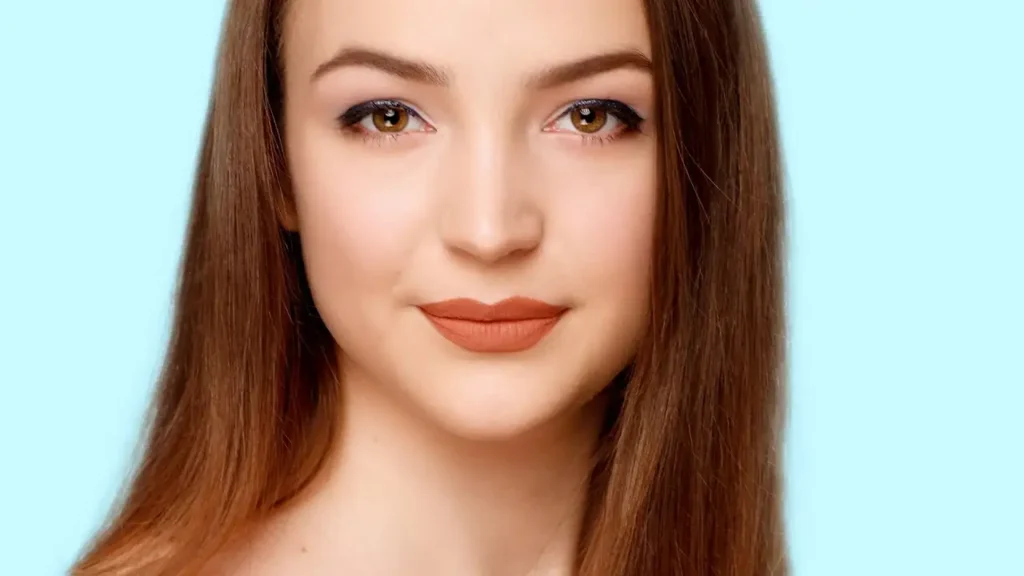
Eyes are often described as the window to the soul. Their depth, color, and expressiveness tell stories beyond words. Within eye colors, honey colored hazel eyes have a unique emotional impact, casting spells and leaving lasting impressions on beholders. This section will explore these mesmerizing orbs’ more profound meaning and emotional resonance.
Historical Context and Symbolism
Throughout history, hazel eyes have been the muse of poets, artists, and storytellers. They symbolized mystery and allure in many ancient civilizations. In certain cultures, they were associated with the changing seasons, especially the shift from summer’s golden warmth to autumn’s cool, earthy tones. This duality and balance reflect the honey-colored hue—a blend of green’s tranquility and brown’s grounding nature.
Modern-Day Perceptions
In contemporary times, surveys and social experiments have shown that people attribute certain personality traits based on eye color. Individuals with honey-colored hazel eyes are often perceived as confident, independent, and unpredictable. Their eyes hint at a warm and welcoming personality yet filled with layers waiting to be discovered.
The Psychological Connection
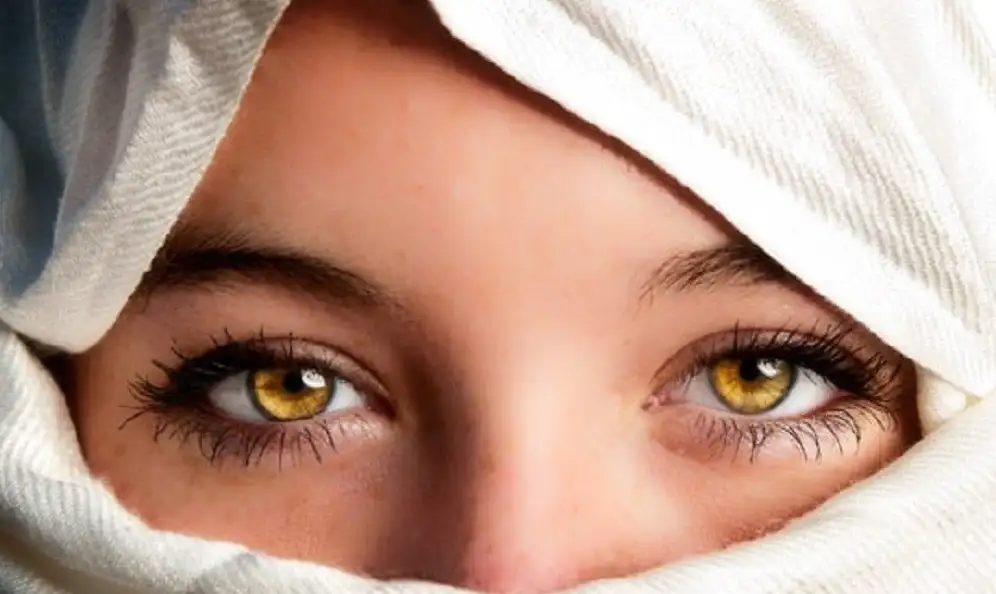
From a psychological standpoint, colors influence our emotions and perceptions. The golden undertones in honey colored hazel eyes are associated with warmth, comfort, and positivity. The flecks of green or blue convey calmness, depth, and a touch of mystique. The combination presents a balanced persona that intrigues and invites connection.
Pop Culture and Media Influence
Movies, television shows, and literature often use eye colors to symbolize character traits. Honey colored hazel eyes in protagonists often depict them as adaptable and multifaceted individuals, capable of wearing many hats and navigating diverse situations. These characters resonate with audiences because they exhibit strength and vulnerability, making them relatable and aspirational.
The Power of First Impressions
We’ve all heard that the first impression is the last. When one locks eyes with a person bearing honey colored hazel eyes, the chances of that first impression being a powerful one are high. Their watches exude a comforting warmth and an intriguing enigma, making them unforgettable.
Discover more helpful tips on maintaining eye health tailored to different types of vision by exploring healthcare blogs in USA.
The Nutritional Aspect of Maintaining Radiant Hazel Eyes
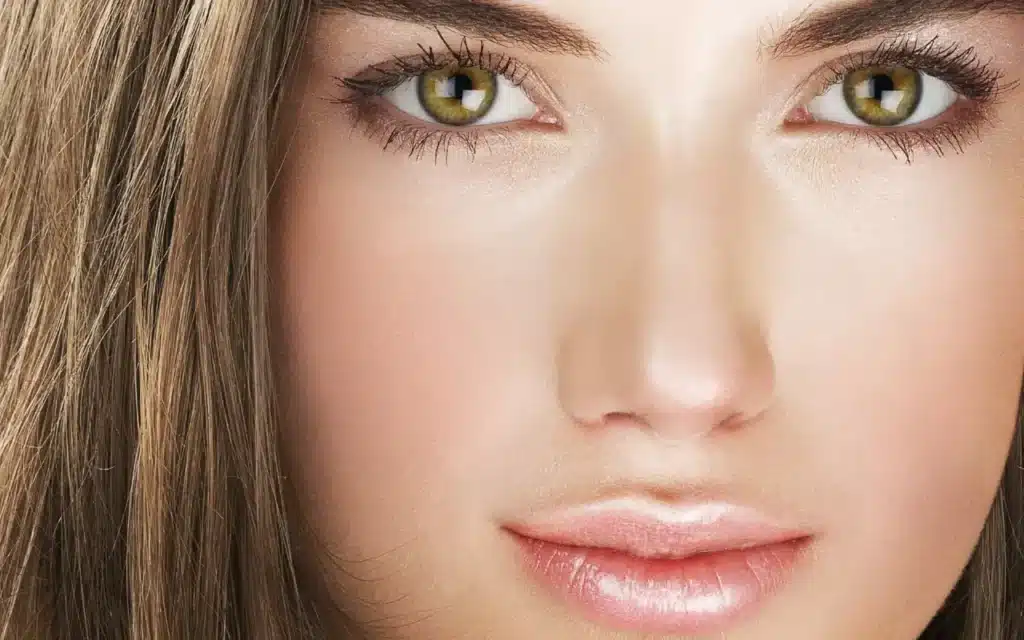
Eyes are not just windows to the soul but also a reflection of our overall well-being. While genetics plays a pretty important role in determining our eye color, the health and vibrancy of our eyes can be influenced by what we consume. With honey colored hazel eyes being such a unique blend of hues, let’s dive into the nutritional choices that can enhance their natural radiance and ensure optimal eye health.
The Importance of Antioxidants
Antioxidants are vital compounds that protect our cells, including those in our eyes, from damage by free radicals. Consuming foods rich in antioxidants can maintain our eyes’ health and enhance their natural sparkle.
- Beta-carotene: Found in carrots, sweet potatoes, and pumpkins, this nutrient can boost the vibrancy of honey colored hazel eyes while improving night vision and overall eye health.
- Lutein and Zeaxanthin: Predominantly found in leafy greens like spinach, kale, and collards, these compounds are directly absorbed by the retina, offering protection from harmful high-energy light waves like ultraviolet rays.
Omega-3 Fatty Acids
Essential for retinal function, Omega-3s found in fish like salmon, sardines, and mackerel can maintain the moisture content of the eyes. This can be particularly beneficial for those with hazel eyes, as it adds a dewy glow, enhancing their multidimensional appearance.
Vitamins C and E

Both these vitamins are potent antioxidants. Citrus fruits, strawberries, almonds, and sunflower seeds are excellent sources. Regularly including these in one’s diet can prevent age-related macular degeneration and ensure honey colored hazel eyes remain clear and bright for years.
Hydration is Key
A simple yet often overlooked aspect is hydration. Drinking adequate water daily ensures eyes remain clear and whites stay bright. This is vital for hazel-eyed individuals, as clarity can elevate gold, green, and brown mingling hues.
The Role of Minerals
Zinc, found in beans, seeds, and poultry, is crucial in transporting Vitamin A from the liver to the retina, producing melanin. This pigment gives the eyes their color and protects them from harmful UV radiation. Thus, a zinc-rich diet can enhance the depth and allure of honey colored hazel eyes.
Learn how long does eye strain last and tips to prevent eye strain in our comprehensive guide.
Makeup Tips for Accentuating Hazel Eyes

Honey colored hazel eyes are versatile and can be accentuated in multiple ways. Earthy tones such as browns and gold can highlight the honey aspect. For a contrasting pop, purples and greens can be used. Mascaras and eyeliners in shades of brown or burgundy can provide a subtle yet defining frame for these enchanting eyes.
Sunglasses and UV Protection
Protection against UV rays is essential. For those with honey-colored eyes, sunglasses with complete UV protection are indispensable. They protect the eyes and enhance the beauty of hazel eyes behind those tinted lenses.
Conclusion
Honey-colored hazel eyes are a captivating blend of genetics, science, and beauty. While understanding their origin and composition is intriguing, taking care of these eyes and accentuating their unique color is equally important. Embrace the beauty of Hazel Brown-colored eyes and let them shine in all their multifaceted glory.
FAQs
How do genetics influence hazel eye colors?
Eye color inheritance is not simply dominant or recessive. Multiple genes play their core role in deciding eye color, which is why it’s possible for two brown-eyed parents to have a child with hazel eyes and vice versa.
What is the role of melanin in determining eye color?
Melanin is the natural pigment that decides our eye color. The amount and type of melanin in the eyes influence whether they are brown, blue, green, or hazel.
How do external factors impact the appearance of honey colored hazel eyes?
Environmental factors, such as lighting and surrounding colors (like clothing or makeup), can influence how hazel eyes are perceived. In different lighting conditions, they can appear darker or more vibrant.
Are honey colored hazel eyes more sensitive to light?
While lighter eyes can sometimes be more sensitive to bright light, honey-colored hazel eyes don’t necessarily have increased sensitivity. However, protection from UV rays is crucial for all eye colors.
What nutritional choices can enhance the vibrancy of hazel eyes?
Consuming antioxidants like beta-carotene, lutein, and zeaxanthin can boost the eyes’ radiance. Additionally, Omega-3 fatty acids, Vitamins C and E, hydration, and minerals like zinc play vital roles in maintaining eye health and vibrancy.
By understanding these FAQs, one can further appreciate the depth and beauty of honey colored hazel eyes.


